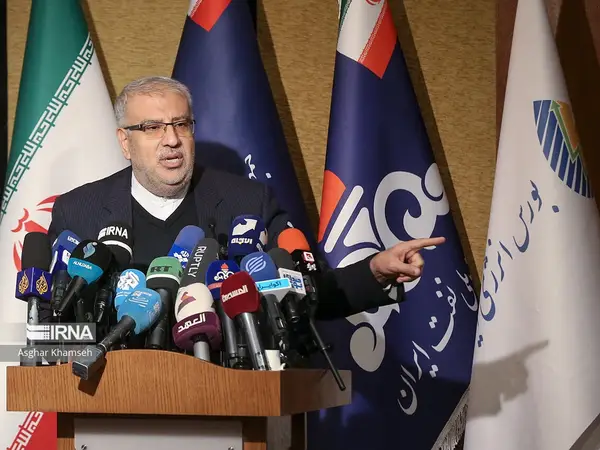Iran’s oil minister Javad Owji said Sunday the country’s exports are at its highest point since 2018, claiming that $14 billion of oil revenues has been injected into the economy.
His claims come at a time when Iran is is serious need of hard currency, with its national currency extremely weak and volatile.
The oil minister boasted that the country has achieved the new record in exporting oil despite the US sanctions following the US pullout from the 2015 nuclear deal and imposition of all-out measures. Owji claimed that since 2018 when the Trump administration re-imposed sanctions on the Islamic Republic, more and more punitive measures have been put in place as European states, insurance companies, shipping companies, ports and other trade mechanisms are abiding by the US sanctions.
He said that despite the measures, the oil ministry has injected $14 billion into the country’s foreign currency trading services in the past 11 months. He added that Iran’s oil exports have increased 190 million barrels compared from two years ago -- from March 2020 to March 2021 -- and 83 million barrels more that the figure of the previous Iranian year, which ended in March 2022. "We exported 83 million more oil barrels since 21st March 2022 compared to the same period last year. This represents 190 million more oil barrels exported compared to the period March 2021 to March 2022," he said.
But bringing back $14 billion from oil exports is a fraction of what Iran needs to balance its budget, without taking into account secret military expenditures and assistance to its proxy forces in the region. Generally, an annual oil export revenue of $60 billion is considered the minimum for Iran to keep its finances afloat.
Owji did not disclose the exact number of barrels exported by the country but most of its exports go to Chinese small refineries, but it is not clear how much they pay per barrel or whether they pay in hard currencies to Iran or barter the oil with goods. Iran does not reveal how much it earns from crude oil exports, but if we take the lower estimate of 0.6 million shipments p/d and an average price of $90 p/b for 2022, revenues should total $20-22 billion for the 12 months of 2022.
While many oil industry sources say Iran exports around one million barrels of crude per day, others believe the volume is much less and the income modest.
TankerTrackers, Vortexa, Kpler, and other sources estimate Iran exported anywhere from 810,000 to 1.2 million barrels of crude oil per day in recent months. Iran keeps the export volume secret, but top officials constantly claim revenues are increasing.
In recent days, Iran’s currency rial has gained against major international currencies after a political rapprochement with Saudi Arabia that unlocked diplomatic channels between the two countries after seven years. The rial closed at over 450,000 against the US dollar on Saturday, up from a historic low of 600,000 in late February.
Elsewhere in his remarks, Owji also claimed that the Islamic Republic and Saudi Arabia will bolster their cooperation in the framework of OPEC. The CEO of Saudi Arabian Oil Group -- or simply Aramco -- Amin H. Nasser says Saudi-Iran agreement to mend relations will enhance regional stability and have a positive impact on the global oil market.
He said spare capacity remained tight at 2 million barrels per day, while demand for jet fuel was increasing alongside China's re-opening from tight Covid restrictions.
"If you consider China opening up and a pick-up in jet fuels and very limited spare capacity, we are talking 2 million barrels, so as I said we are cautiously optimistic in the short to midterm and the market will remain tightly balanced," he said.
